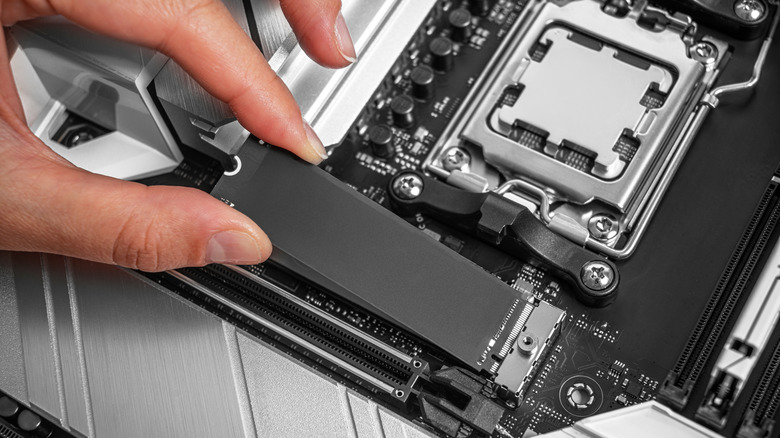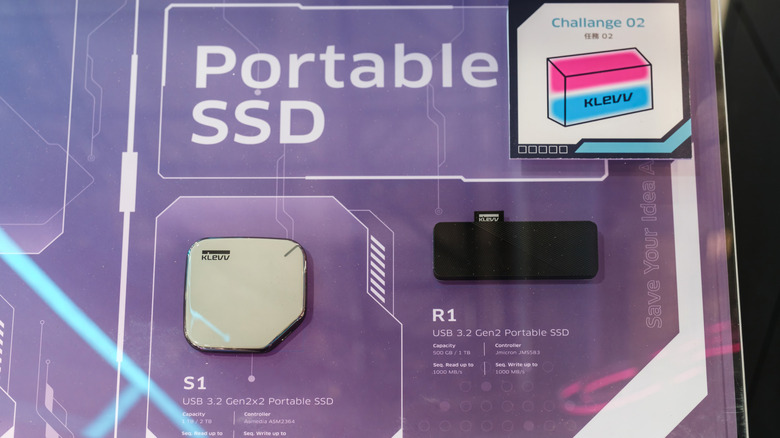What To Look For When Buying Used & Refurbished SATA And NVMe SSDs
Buying a used or refurbished SSD can make a lot of sense for many reasons. After all, reliable SSDs from major brands like Samsung, Intel, Seagate, and Crucial can be expensive. So, purchasing a used one can help you obtain a high-capacity SSD that doesn't compromise speed or quality. But with cheaper prices (say half of a brand-new SSD) come hidden risks. Although a budget-friendly SSD packs considerable value, veering away from new SSDS brings a lot of risks.
When it comes to SSDs, one of the hardest things to determine is the amount of life they have. At a glance, SSDs might all seem physically fine even when failing. They're solid-state devices that won't show visible signs of wear and tear like broken platters or scratches. So, there is no way to determine how many terabytes have already been written to them (TBW) or how many hours they've been powered on (POH) unless you use tools like CrystalDiskInfo. But why does this matter?
SATA and NVMe SSDs usually have limited write cycles, which directly impact the drive's lifespan. Therefore, when data is written or erased, the drive wears out and becomes less efficient. That means if a pre-owned drive has seen heavy use, much of its lifespan could be gone before you even install it. But you don't have to give up on used SSDs just yet, as there are many ways to mitigate these risks. It all comes down to knowing what to look for and weighing the risks and benefits.
Usage history and age can break a used SSD deal
When it comes to used or refurbished SSDs, the risks involved might not be worth the lower prices. But you can still get a great deal, especially if you know what to look for (and what to avoid). For starters, you must consider the age of the SSD. It's a fact of life: the older an SSD is (or any other device, for that matter), the more likely it is to experience performance issues. It's not just about the age, however, as the workload you put on the drive can also affect the lifespan of your SSD.
Remember that even if the SSD is under five years old, you could still run into problems after a few months. While some online sellers might list the drive as "lightly used," verifying the drive's usage is crucial. You can check the SSD's remaining health using software like SMART (Self-Monitoring Analysis and Reporting Technology). Ensure you pay close attention to TBW, firmware health, and power-on hours. If the drives seem to be approaching their rated TBW, it might not be a reliable long-term option. Apart from that, there will be other signs indicating the SSD is on its last leg.
Before purchasing, you'll want to ask the seller questions about how and where the SSD was used. An SSD pulled from enterprises like servers, workstations, or crypto-mining rigs has frequent cycling compared to one used in a personal laptop. That's because even if a used SSD has been reconditioned to appear perfect, its internal flash cells may still fail to function properly.
The seller matters when shopping for used or refurbished SSDs
Focusing on the age and quality is just as important as focusing on age and quality when buying a used SSD. In fact, when it comes to used electronics, the source from which you're buying them can make all the difference between scoring a great deal and ending up with something inoperable. If you want to get a great deal on a used SSD, even the highest-capacity model, you must purchase it from an authorized seller specializing in certified refurbished technology.
Heading to certified refurbished units like Amazon Renewed is a safe way to buy a refurbished SSD. You'll likely get a drive that has been properly cleaned, tested, and even repackaged. Even better, these devices will come with short-term warranties or return windows. This will offer you some assurance, in case the device fails to meet your expectations.
Oftentimes, you might be tempted to buy from individual sellers, especially on auction sites or unverified marketplaces. After all, you can get used SSDs directly from other sellers through platforms like eBay and Facebook Marketplace at a cheaper rate than third-party resellers on Amazon. However, it could be riskier. While you might save more by buying from an individual, the lack of a warranty means you're taking a bigger gamble. That's why, unless the seller provides detailed usage statistics, health reports, and clear, high-quality photos of the drive, it's best that you keep away. Remember, if the price looks unusually low, there's often a reason for it.


